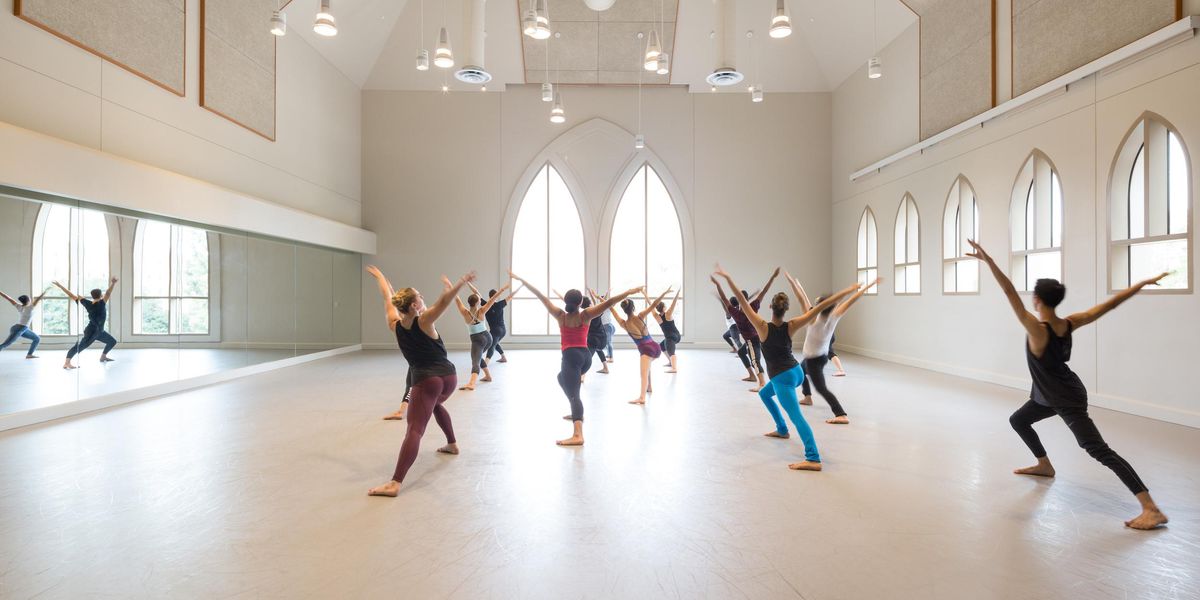Quick Q&A: Gabrielle Lamb
The NYC-based choreographer is gaining momentum.
The commissions keep coming for Gabrielle Lamb, a dancer of stunning clarity who illuminates the smallest details—qualities she brings to the dances she makes, too. This past year, the NYC-based dance artist won choreographic competitions at Milwaukee Ballet and Western Michigan University, and was named one of three finalists who will compete at Ballet Austin—the resulting works will premiere next year. A Savannah native who trained at the Boston Ballet School, Lamb danced with Les Grands Ballets Canadiens de Montréal for nine years and with Morphoses under all three directors. Also a filmmaker and animator, she continues to perform with Pontus Lidberg Dance and others. This month, Lamb premieres her second piece for Philly’s BalletX. In August, a week before flying to Ballet Memphis to set one of her works, she spoke with associate editor Kina Poon.
How did you become interested in choreography?
From the time I was 5, I was putting on shows and designing costumes. But I stopped because choreography isn’t really part of intense ballet training. I was actually afraid to do it for a long time.
Why?
I felt intimidated. Somehow the courage that I had when I was a little kid, ballet training kind of wiped that out. When I went to Montreal to join Les Grands Ballets Canadiens, there were so many creative people, and most of the people who were really gung ho about choreography were guys. I felt myself sort of shrinking into myself, afraid I wouldn’t stand up beside them. But as time went on, I got over it and started daring. You just have to jump in.
Why do you think there are so few female ballet choreographers?
I actually feel like there are a lot of us in my generation. Maybe the line is whether you use pointe shoes or not. Thus far I haven’t. There have been some requests that I’m trying to figure out how to deal with.
Somebody recently said something interesting to me: that men in ballet are already outsiders. You’ve had to make a decision to be different. So I think it’s easier to take that step towards creating something of your own. Whereas for a woman, ballet is a very conformist thing to do—being pretty, following instructions, staying in line.
Do you find being an active dancer in other people’s work and then making your own difficult?
No. In a way I need it—well, I’m not always going to have the option, but it helps me to not go to the same patterns all the time and also to experience ways other people construct their work. You do have to be careful. I think about choreographers I worked with in Montreal who had worked with other choreographers that I knew and I would see—it’s just inevitable that we influence each other’s work. The trick is to go as far into it as you can, so it’s not just stealing something from the surface.
Which choreographers influence you?
Of people whose work I got to dance: Shen Wei, Mats Ek, and also Pontus, for partnering especially, had the greatest impact on my dancing. As far as people whose work I have yet to dance: Crystal Pite and Pina Bausch would be the two big ones.
Right: BalletX in Lamb’s
Stations of Mercury. By Alexander Iziliaev, Courtesy BalletX.
Tell me about your new piece for BalletX.
I read a book recently that had someone making a choice at a pivotal moment and then you got to follow the line of her life in either case—it alternated chapters between option A, option B. I don’t know what form it will take in dance, but I like the idea of exploring alternate realities.
Did you use all of the BalletX dancers in your last piece?
I used everybody, but some of them were only in the second cast. That was the first time I ever had to not use everybody, and to make the choice was a real struggle for me. When I have to pick somebody after one day, I might be missing out on so much. I’ve found that, a lot of times, the people whose dancing doesn’t strike me in the beginning somehow have the most distinct moments in the piece. I was proud that both casts were so strong. It was a relief to me because I’ve been not chosen so many times in my own career that I guess I couldn’t bear it to do it to somebody else.
There’s so much more to be taken from a performing career than movement quality.
I’m really conscious of how I treat dancers. People tell me, You just need to toughen up and not worry about what the dancers think. And it’s like, Well, yes and no. There are people that take sadistic pleasure in undermining your confidence, who make you think that you can’t or you’re not good at something. With me, some people will get used more than others, but I want to be able to find something special about every person that I work with. Of course the end product that the audience sees is the priority, but it’s possible for us to have a good time making it, too.




